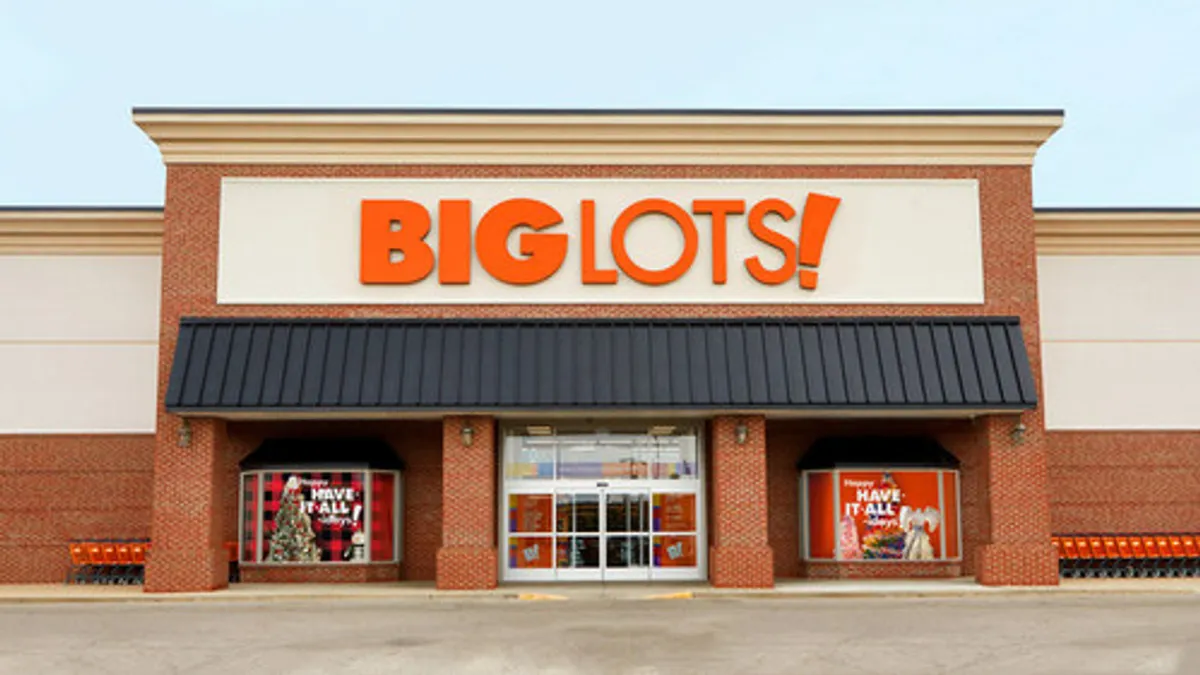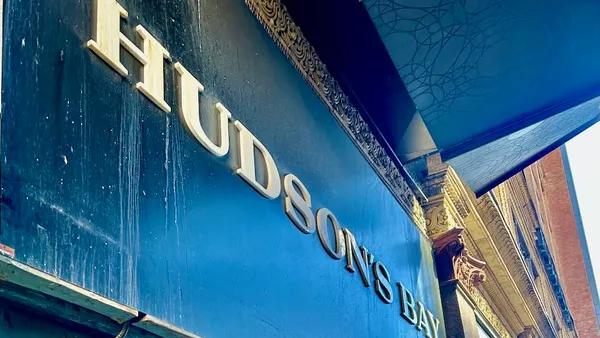Dive Brief:
- Big Lots on Friday reported a quarterly loss of $206.1 million. The retailer’s net sales fell 18.3% to $1.1 billion compared to $1.38 billion last year. Comp sales were down 18.2% year over year, which the company attributed to the macroeconomic and vendor disruption.
- CEO Bruce Thorn said the retailer is “being very aggressive in how we are managing our business.” Those tactics include identifying $100 million in SG&A savings and making sure the company retains enough liquidity to weather the current economic climate.
- Big Lots plans to close four forward distribution centers as a cost-saving measure. The retailer is also leasing back a number of properties, including its headquarters and owned stores.
Dive Insight:
The three months ending April 29, were “clearly a disappointing quarter,” Thorn said.
A contributing factor to the down quarter, according to Thorn, was the abrupt closure of United Furniture Industries in November. That company was Big Lots’ largest vendor. Sales of seasonal lawn and garden merchandise were also affected by bad weather.
“As a result, comp sales in Q1 were softer than we expected, particularly in March,” Thorn said on an earnings call with analysts. “Trends improved slightly in April, more in line with what we saw in February, but we had higher levels of late-quarter promotions that targeted seasonal and furniture divisions than we would have liked and [the] mix was unfavorable. Therefore, gross margins also came in lower than we expected.”
Big Lots raised its markdown and promotional activity and also canceled orders, citing the soft economic environment. Those moves allowed the retailer to end Q1 with lower inventory levels in line with the quarter’s sales decline.
The company reported inventory ended the quarter at just under $1.1 billion versus $1.3 billion last year, a nearly 19% decrease that was driven by lower in-transit inventory and on-hand units.
To further strengthen the company’s financial position, Big Lots said it will lease back a distribution center near San Bernardino, California; its corporate headquarters building in Columbus, Ohio; and most of its remaining owned stores. These moves should generate $340 million, or $240 million in net proceeds when considering the $100 million balance on the California distribution center’s lease. Big Lots said it ended Q1 with 1,427 stores.
Jonathan Ramsden, Big Lots’ chief financial and administrative officer, told investors and analysts on Friday’s earnings call that concerns over a potential banking crisis also affected consumer confidence last quarter.
Big Lots’ capital expenditures fell to $16.9 million, down from $43.7 million last year. The company ended Q1 with $51.3 million of cash and about $502 million of long-term debt. While Big Lots declined to offer full-year guidance, Ramsden said the company expects to see similar comps in Q2 as it did in the first quarter. Product shortages in furniture are also likely to affect the bottom line.
Big Lots also announced Friday that it's suspending its dividend. “That was, of course, not a decision the board took lightly, but in the near term, we believe protecting and enhancing liquidity should be our highest priority,” Thorn said.
“While [Big Lots] is pulling all available levers to boost liquidity, we expect concerns around the potential for vendors to significantly tighten credit terms or (in the worst case) stop supply to persist,” Credit Suisse analysts led by Karen Short said in a Friday note. Q1 was Big Lots’ eighth consecutive quarter of sales declines and the fifth consecutive quarter of negative operating margins, according to Credit Suisse.
“That said, based on our conversations with the company, [Big Lots] thinks its vendor relations are still on solid footing, with no change to their existing credit terms or supply relationships as of today.” And even though Big Lots has identified short and long-term cost savings, “we still have very low visibility for [Big Lots] to reach positive EBIT margins in CY24,” Credit Suisse said.













